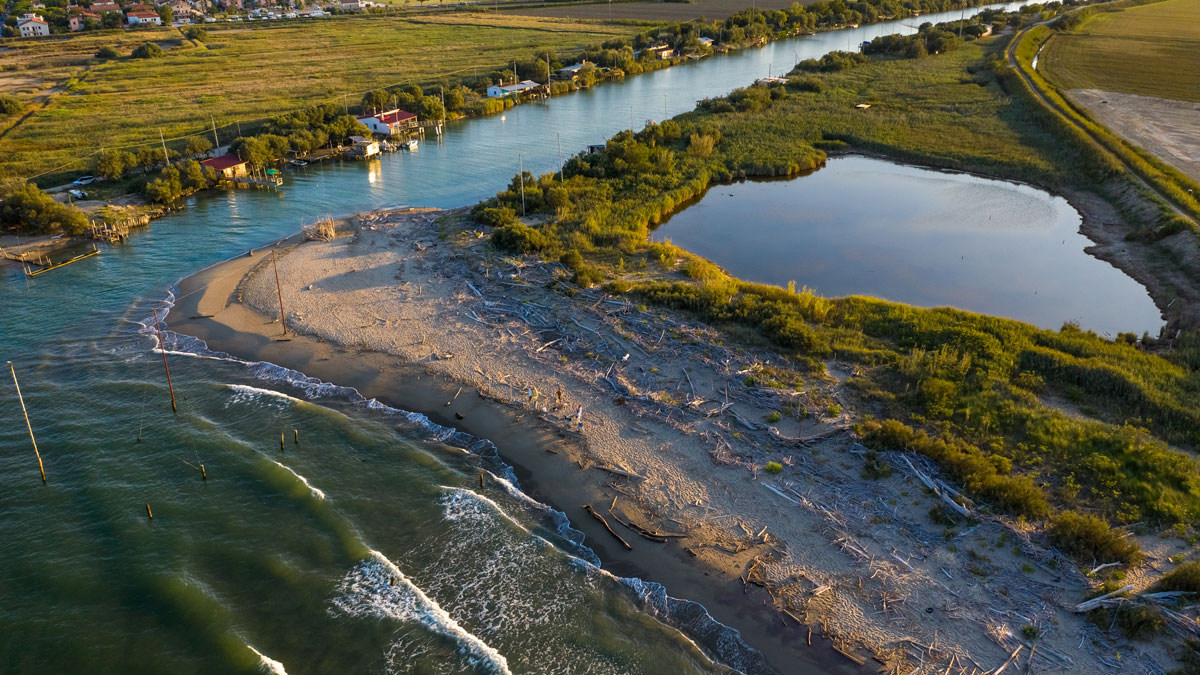Nutrient-rich agricultural runoff is a well-known scourge of coastal marine ecosystems. But another major source of nutrient contamination—human wastewater—has received relatively scant attention in the literature. Now, researchers have constructed a high-resolution geospatial model to map and quantify the pathogens and nitrogen from human sewage that enter roughly 135,000 watersheds draining into coastal ecosystems around the world.
Bad Blooms
When a marine environment becomes too enriched in nitrogen or other nutrients—a state known as eutrophication—a slew of problems can erupt. For instance, algae can consume the nutrients and then rapidly multiply (“bloom”), effectively choking out other life forms and creating coastal dead zones. And those problems can rapidly lead to others, said Cascade Tuholske, a geographer at Columbia University in New York City. “What we’re most concerned with are tipping points, whereby eutrophication can cascade into complete ecosystem collapse.”
Nutrient-rich fertilizers and livestock waste are major sources of nitrogen, but so is human sewage. And as diets worldwide shift to include more nitrogen-rich animal protein, our waste products are destined to excrete more and more of this nutrient, said Tuholske, who coled the new research while working at the University of California, Santa Barbara. “We excrete most of the nitrogen that we ingest.”
“The thing about wastewater is that it’s generally invisible.”
Human sewage can enter coastal ecosystems in many ways. In communities that have either sewer or septic systems, processed wastewater drains into watersheds that eventually empty into the ocean. In regions in which open defection occurs, untreated human sewage directly enters watersheds.
But it’s often difficult to get a handle on this type of pollution, said Stephanie Wear, a marine ecologist at The Nature Conservancy in North Carolina not involved in the research. “The thing about wastewater is that it’s generally invisible. A lot of the pollution occurs unseen.”
A Whole Lot of Nitrogen
Tuholske and his colleagues compiled a variety of data sets—including estimates of population, protein consumption, and sanitation practices—to assemble a high-resolution, global map of how much human wastewater–derived nitrogen entered coastal waters in 2015. They focused on roughly 135,000 watersheds that emptied into, or were adjacent to, the ocean. The team estimated that overall, human wastewater contributed more than 6 million metric tons of nitrogen to coastal waters. That’s roughly 45% of the nitrogen delivered by agriculture.
“It’s this whole new layer that we’ve been missing since we’ve been looking at threats to oceans,” said The Nature Conservancy’s Wear.
The researchers also discovered that just 25 watersheds cumulatively produced roughly half of the human wastewater–derived nitrogen that entered the ocean. Even though these watersheds—disproportionately located in China, India, and Korea—are home to a significant fraction of the world’s population, it was a surprise to find that they collectively contributed so much nitrogen, said Tuholske. “Twenty-five watersheds are driving about half of the problem.”
The team furthermore found that 58% of the world’s coral reefs and 88% of its seagrass beds—particularly vulnerable marine ecosystems known for their biodiversity and ability to sequester carbon, respectively—were exposed to nitrogen runoff from human wastewater. There were outsize contributions from sewage tied to septic tanks and open defecation, the researchers found. Even so, increasing access to sewer systems wouldn’t necessarily be a panacea, the team proposes. That’s because most wastewater treatment plants don’t actually remove nitrogen from their effluent and, in fact, often end up concentrating it, said Tuholske. “There’s no one solution that’s going to fix all these problems in all places.”
Boosting Awareness
But this global look at an important problem is powerful, nonetheless, Tuholske and his colleagues believe. A wide-angle view puts these kinds of problems on the map, which increases awareness, said Tuholske. “Communities can start looking at where there are similar problems.”
And communities are the focus of follow-up work currently being led by Madeline Berger, one of Tuholske’s colleagues. Berger is taking a closer look at the nitrogen that emanates from Mesoamerica, specifically Belize, Guatemala, Honduras, and parts of Mexico. One of Berger’s goals was to examine the contributions of human wastewater–derived nitrogen from tourists and local populations separately. But that proved to be a challenge, said Berger, a geospatial analyst at the National Center for Ecological Analysis and Synthesis in Santa Barbara, Calif. “Tourists are always moving around.” Preliminary analysis suggests, however, that tourists contribute only a small fraction of the nitrogen that eventually enters coastal ecosystems. Some exceptions do persist, but they’re mostly tiny watersheds that are right on the coastline, said Berger: “tourist hot spots like Cancun.”
This fine-grained approach is a perfect example of how global-scale results can and should be examined in more detail, said Tuholske. “Our study serves as a great jumping-off point for higher-resolution analysis.”
These results were published in November in PLoS ONE.
—Katherine Kornei (@KatherineKornei), Science Writer
This news article is included in our ENGAGE resource for educators seeking science news for their classroom lessons. Browse all ENGAGE articles, and share with your fellow educators how you integrated the article into an activity in the comments section below.


